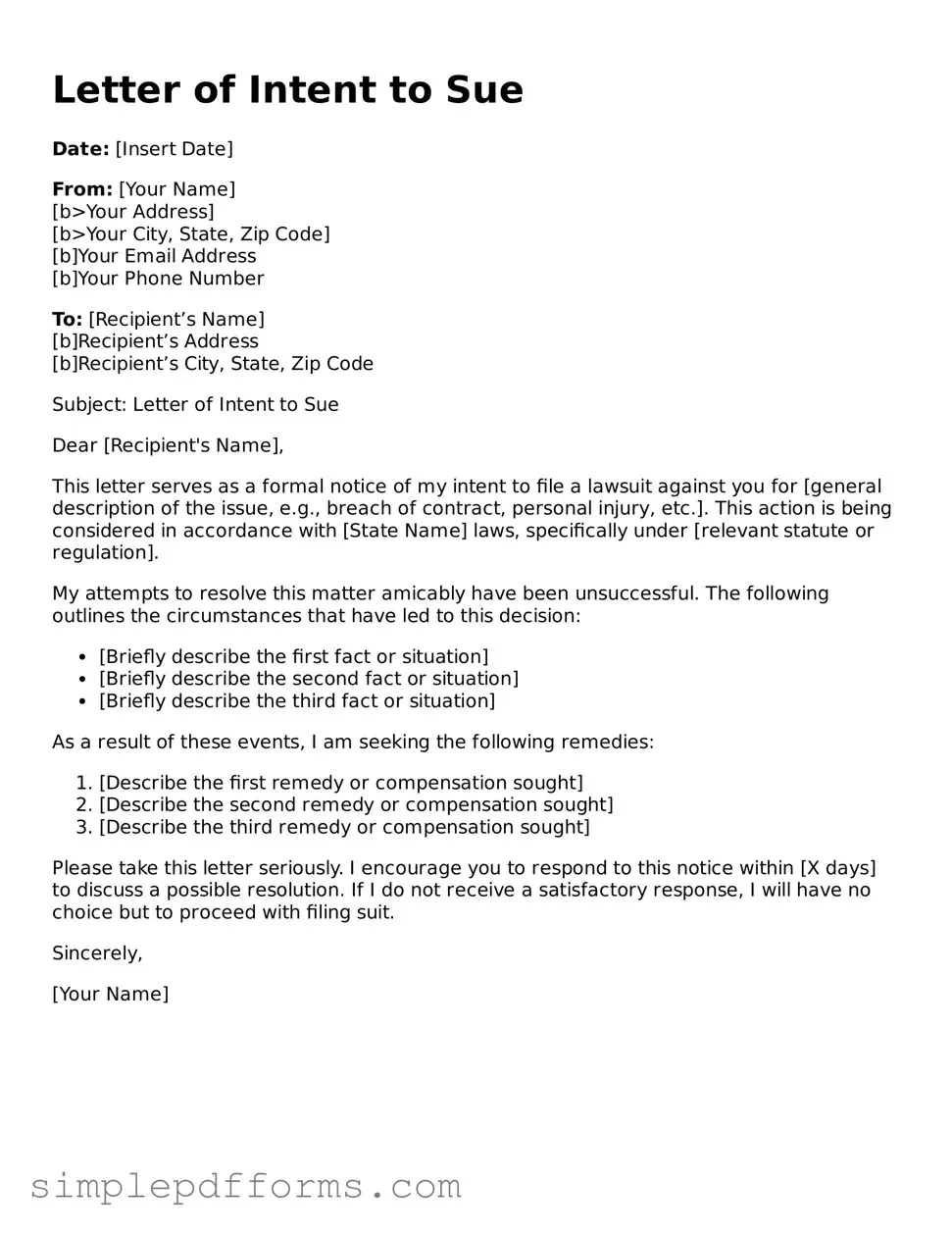Letter of Intent to Sue
Date: [Insert Date]
From: [Your Name]
[b>Your Address]
[b>Your City, State, Zip Code]
[b]Your Email Address
[b]Your Phone Number
To: [Recipient’s Name]
[b]Recipient’s Address
[b]Recipient’s City, State, Zip Code
Subject: Letter of Intent to Sue
Dear [Recipient's Name],
This letter serves as a formal notice of my intent to file a lawsuit against you for [general description of the issue, e.g., breach of contract, personal injury, etc.]. This action is being considered in accordance with [State Name] laws, specifically under [relevant statute or regulation].
My attempts to resolve this matter amicably have been unsuccessful. The following outlines the circumstances that have led to this decision:
- [Briefly describe the first fact or situation]
- [Briefly describe the second fact or situation]
- [Briefly describe the third fact or situation]
As a result of these events, I am seeking the following remedies:
- [Describe the first remedy or compensation sought]
- [Describe the second remedy or compensation sought]
- [Describe the third remedy or compensation sought]
Please take this letter seriously. I encourage you to respond to this notice within [X days] to discuss a possible resolution. If I do not receive a satisfactory response, I will have no choice but to proceed with filing suit.
Sincerely,
[Your Name]
